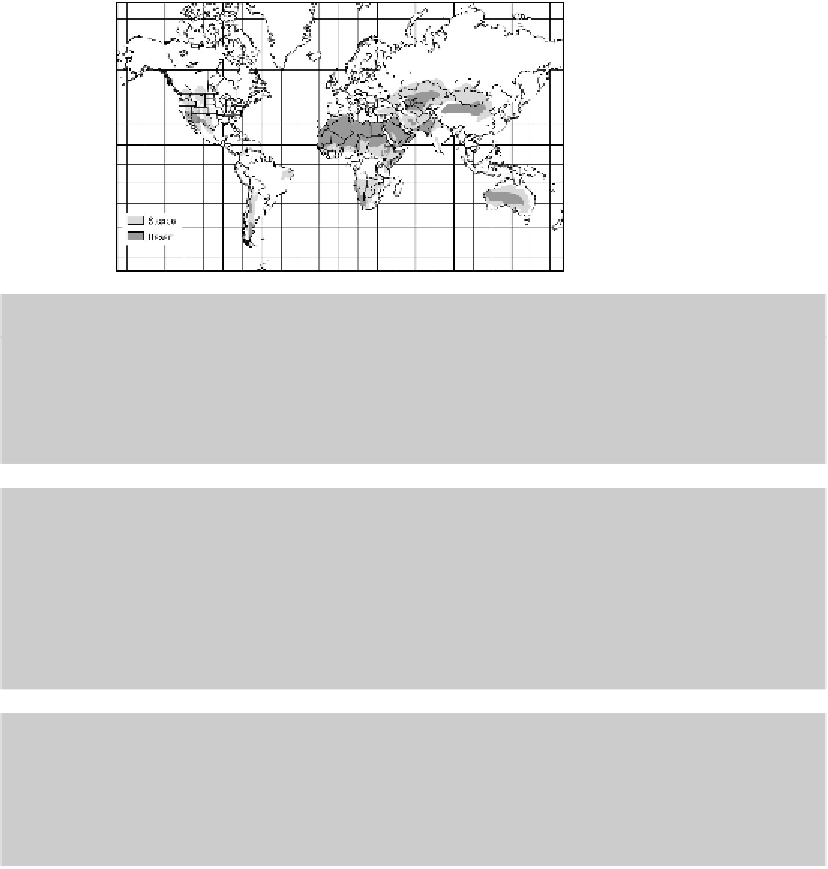Geography Reference
In-Depth Information
Figure 10-3:
The
geography of dry
climates.
Hot times in Al-Azizia
Earth's all-time recorded high temperature — 136° F in the shade — occurred at Al-Az-
izia, Libya on September 13, 1922. That eclipsed the previous record, 134° F, recorded
in Death Valley, California, on July 10, 1913. In all likelihood, higher temperatures have
occurred on Earth but have gone unrecorded. In any event, these two numbers are testi-
mony to the fact that by far the world's highest temperatures occur in sub-tropical deserts.
Given the discussion of sun angles in Chapter 9, this may surprise you. The equator re-
ceives higher concentrations of solar energy than Al-Azizia, so you'd figure the equator
would be warmer. However, in the equatorial realm the atmosphere tends to be some-
what cloudy and contain lots of water vapor. These respectively reflect a good portion of
incoming solar energy back into space and directly absorb solar energy, both before the
sunshine touches Earth. Moreover, much of this area is covered by vegetation instead of
bare ground, so the “Earth as frying pan” analogy simply does not work to anything near
maximum efficiency at the equator.
However, the likes of Al-Azizia are a different matter. The lack of cloud cover and scarcity
of vapor in the clear desert air means that a very high percentage of the solar energy that
strikes this area reaches the surface, much of which is bare ground. Thus the frying pan
analogy works to near perfection. The bottom line is that even though Al-Azizia receives
less intense “dosages” of solar energy than does a point on the equator, it heats up to a
much greater extent.
Desert
Desert climate pertains to areas that average less than 10 inches of precipitation per year. As noted
in Chapter 9, cold ocean currents, persistent high-atmospheric pressure, and mountain ranges that






